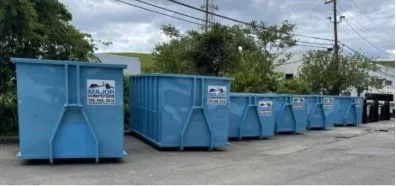How Reliable Replacement Parts Keep Mines Operating Smoothly
Mining operations run on tight schedules and heavy machinery that can’t afford unexpected failures during production cycles. When equipment goes down during critical mining windows, every minute costs money through idle labor, missed production targets, and cascading delays that ripple through entire operations affecting downstream processes and customer commitments.
A single equipment failure can halt production and cost thousands per hour in lost revenue that never gets recovered. Investing in quality mining equipment replacement parts keeps machines running, minimizes downtime, and extends asset life beyond what cheap alternatives deliver when they fail prematurely and create expensive emergencies.
How reliable mining equipment replacement parts keep mines profitable and safe matters more than most purchasing decisions realize until failures force expensive lessons. Understanding downtime costs, quality benefits, predictive maintenance, and supplier relationships helps operations make smarter parts decisions that protect productivity and profitability rather than just minimizing purchase order amounts.
The True Cost of Unexpected Downtime
Production losses from idle equipment dwarf parts cost savings when cheap components fail prematurely and force unplanned stoppages. Mines operating on thin margins can’t absorb lost production hours that translate directly to missed revenue targets. Calculating hourly production value reveals that saving hundreds on parts means nothing when failures cost thousands per hour in lost output.
Cascading effects multiply downtime costs when equipment failures create bottlenecks stopping multiple operations dependent on failed machines. One crusher going down might idle haul trucks, loaders, and processing equipment throughout entire sites. Understanding these interdependencies shows why reliability matters more than purchase price for critical components affecting multiple operations simultaneously.
Emergency repairs cost exponentially more than planned maintenance using quality parts that prevent failures. Rush shipping, overtime labor, and hasty fixes to get equipment running quickly inflate costs far beyond what proactive parts replacement would have required. Penny-wise, pound-foolish purchasing creates these emergencies that proper parts management prevents entirely through investing in reliability upfront.
Benefits of High-Quality, Precisely Engineered Parts
Engineered parts matching OEM specifications ensure proper fit, function, and performance that generic alternatives can’t guarantee consistently. Dimensional accuracy, material properties, and manufacturing quality all affect how parts perform under mining’s harsh operating conditions. Quality parts deliver predictable wear life and reliable operation that cheap knockoffs compromise through shortcuts that aren’t obvious until failures occur.
Extended wear life from premium parts reduces replacement frequency and associated labor costs for installations requiring significant downtime. Parts lasting twice as long but costing 40% more deliver superior economics through reduced maintenance cycles and labor expenses. Total cost of ownership calculations favor quality over cheapest purchase prices when lifecycle costs get analyzed properly.
Compatibility with existing equipment prevents the fitment issues and performance problems that arise when aftermarket parts don’t quite match specifications despite claims of equivalency. Quality parts from reputable manufacturers undergo testing ensuring they work as intended without surprises during installation or operation. This assurance eliminates risks of discovering incompatibility only after parts arrive on-site and installation attempts reveal problems.
Predictive Maintenance and Planned Replacements
Monitoring wear patterns allows scheduled replacements before failures occur, eliminating unplanned downtime from catastrophic component failures. Tracking operating hours, inspecting wear indicators, and trending performance metrics identify when parts need replacement while equipment remains operational. Proactive scheduling controls timing rather than letting random failures dictate when maintenance happens.
Inventory management for critical spares prevents delays waiting for parts to arrive after failures occur. Maintaining strategic inventory of high-wear components means repairs happen immediately rather than waiting days or weeks for parts shipping. This readiness costs money in inventory carrying costs but saves far more by preventing extended downtime that cheap just-in-time approaches risk.
Planned maintenance windows coordinate parts replacement with scheduled shutdowns, maximizing efficiency and minimizing production disruptions. Replacing multiple wearing components during single planned outages costs less than addressing them individually as they fail randomly. Strategic timing bundles maintenance tasks reducing overall downtime compared to multiple shorter but more frequent unplanned stoppages.
Building Supplier Relationships for Fast Part Delivery
Trusted suppliers prioritize customers who build relationships rather than just chasing lowest prices transaction by transaction. Reliable partners stock critical parts, expedite emergency orders, and provide technical support that transactional vendors won’t offer. These relationships create competitive advantages through faster response times and better service when problems arise.
Local inventory from committed suppliers provides same-day or next-day availability that distant manufacturers can’t match for urgent needs. Supplier investments in local stock benefit customers through reduced lead times and eliminated shipping delays. This responsiveness prevents extended downtime waiting for parts shipping from overseas or distant warehouses.
Technical expertise from quality suppliers helps diagnose problems, select appropriate parts, and optimize maintenance practices beyond just fulfilling orders. Knowledgeable partners add value through application support and troubleshooting that pure parts vendors don’t provide. This expertise prevents mistakes and improves outcomes through guidance that inexperienced purchasing can’t access when treating suppliers as interchangeable vendors.
Conclusion
Dependable replacement parts drive productivity by keeping equipment operational and preventing the expensive downtime that destroys mining profitability. Quality parts, proactive maintenance, strategic inventory, and supplier partnerships create reliability that cheap parts and reactive approaches can’t deliver regardless of purchase price advantages.
Mines should plan proactive maintenance and use trusted suppliers rather than reactive purchasing focused only on lowest costs. Investing in reliability through quality parts and strategic relationships pays for itself many times over through prevented downtime, extended equipment life, and operational predictability that enables meeting production targets consistently without surprises.




